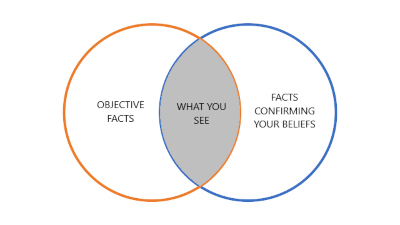How To Persuasively Prepare PPC Audiences For Offers Prior To Asking
There’s a saying in marketing and sales that goes something like this…
Some people will buy from you no matter what you do. Some people won’t buy from you no matter what you do. It’s what you do with the rest that determines how successful you’ll be.
Since this is the case, it’s our job to constantly look to improve our chances with “the rest” by being as persuasive with our target prospects as we can be.
Robert Cialdini is a well-known author on the subject of persuasion and influence. He’s written best-selling books like Influence: Science and Practice. His most recent work is called Pre-Suasion: Channeling Attention For Change.
In the book, he shares with the world additional research he’s done into this topic, but calls out a concept I don’t believe he addressed before this book came out. He calls the concept “pre-suasion,” and essentially tells us that it’s not just what you share in relation to your offer that affects the probability that someone will take it, but it’s also how your audience is prepared for the offer psychologically before they ever receive it.
Channel your audience’s attention
Basically, you can prepare an audience to be more sympathetic to your offer before they get it by how you interact with them. You can channel their attention in ways that will make them more receptive. If you do it well by using proven techniques, you can improve your chances that your offer will be accepted.
Essentially, what you do or say before you make a request is very important.
Through the PPC channel, this is all about what you do with your ads. No matter what the channel or format, the content of the ad is the PPC marketer’s opportunity to set the stage for what they’ll be asking the audience to do.
You do this well if you channel the audience’s attention in a way that makes them more favorable to the change you’re asking from them.
There may be no better opportunity to do this than when someone performs a search. This is because, unlike other activities an audience may be doing online, they are paying full attention. They are basically saying to you, “Now is the time I’m most willing to be influenced.” This point in time is a very important moment, and it’s only temporary.
But if you take advantage of this time in intelligent ways, you can heighten the probability that your ad and offer will be chosen by the people you want to choose them.
This, of course, can be a key part in improving your Conversion Rates; and the higher your Conversion Rates, the lower your Cost Per Conversion. The lower your Cost Per Conversion, the more you can pay for each Click. The more you can pay for each Click, the more Clicks you get as you win more frequent and better ad slots. The more Clicks you get, the more Conversions you get. The more Conversions you get, the more money you make.
A positive test strategy example
Cialdini shares an example of how this can work called “positive test strategy.” He explains it this way…
You can ignite this search for confirmations in someone by asking them the right question. For example, if you ask a person “Are you unhappy?” the natural tendency is to look for reasons to answer affirmatively. While this question is unlikely to get someone who’s truly happy to convince themselves they’re unhappy, it causes people that are truly unhappy to focus their attention on that fact. Using a question to channel their attention makes them more prone to accept a viable solution to reverse the problem presented to them in that moment.
Align requests with the focus of attention
Once they click through an ad with this question, they’re ripe to consume a success story. I could take someone who wasn’t satisfied with where they were at and tell the story of how they used my institution to change their life. Because I set them up with my ad to affirm in their minds that now was indeed time for a change, they will be more likely to be receptive to the solution I’m offering them.
If my tactic of getting them to think about their life right now and if they want to change it led to them deciding they did, now my offer takes on a whole new value. It’s an option to take an action that is consistent with the conclusion my question led them to – because my offer will indeed change their life. I just showed them that it did with someone else. I aligned my request with where I focused their attention.
I probably don’t even use a call to action like “Request More Information.” I say “Contact us to change your life.”
Suddenly, all of the other factors become less important in this moment. Talk to them the day after and maybe thoughts of cost and all the hard work it will take and if they’ll be able to fit classes into their schedule, etc. may now be at the forefront of their minds; making them less likely to accept your offer. But if you can channel their attention to a factor important enough to look past all the obstacles (a successful outcome and better life), that will be the one most likely to determine their choice of what to do with your offer.
Find your combinations
Cialdini explains…
When attention is paid to something, the price is attention lost to something else. Indeed, because the human mind appears able to hold only one thing in conscious awareness at a time, the toll is a momentary loss of focused attention to everything else.
What are the factors that you can channel your audience’s attention to and ways you can align your offers to them? That depends on the audience and the offer of course. But the process of persuasion is governed by psychological laws that produce similar results over a wide range of situations.
If you’ll test channeling the attention of your audience to important emotional factors and align your offers with them, you should be able to find combinations that will improve the probability that the right people will accept your offer. This will lead to the cascade of improved results mentioned earlier from Conversion Rate down to profit.




